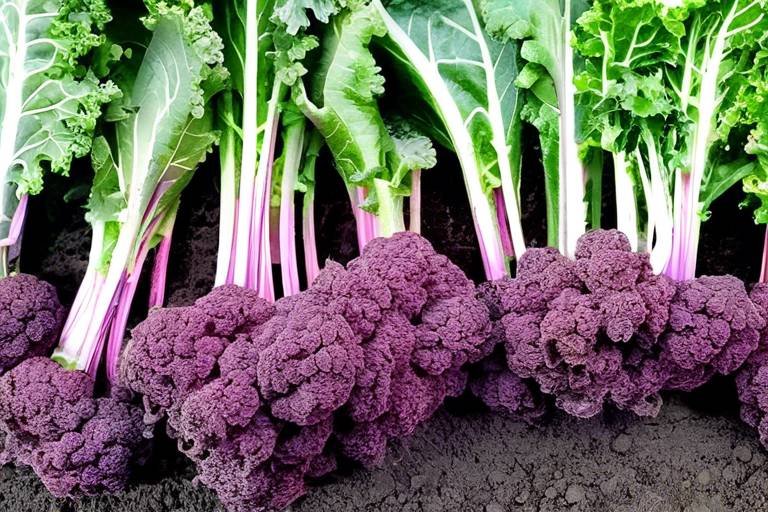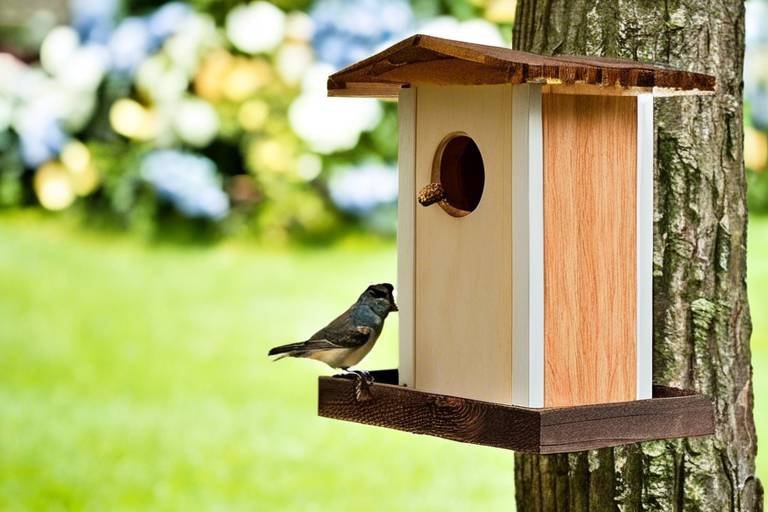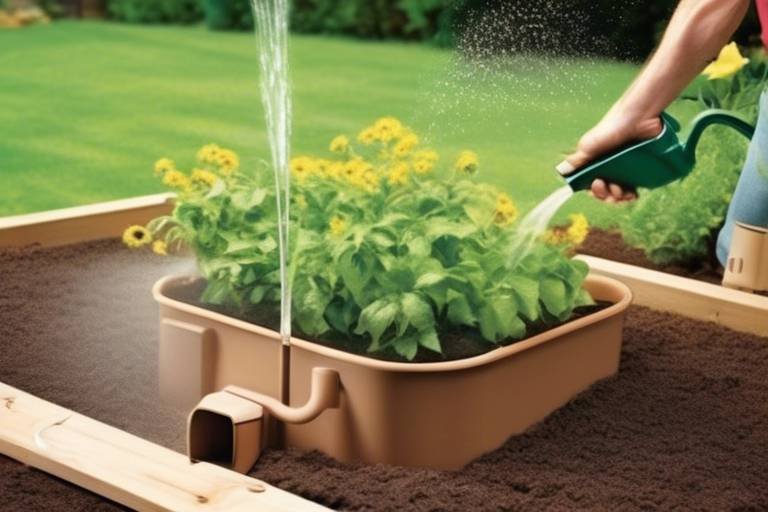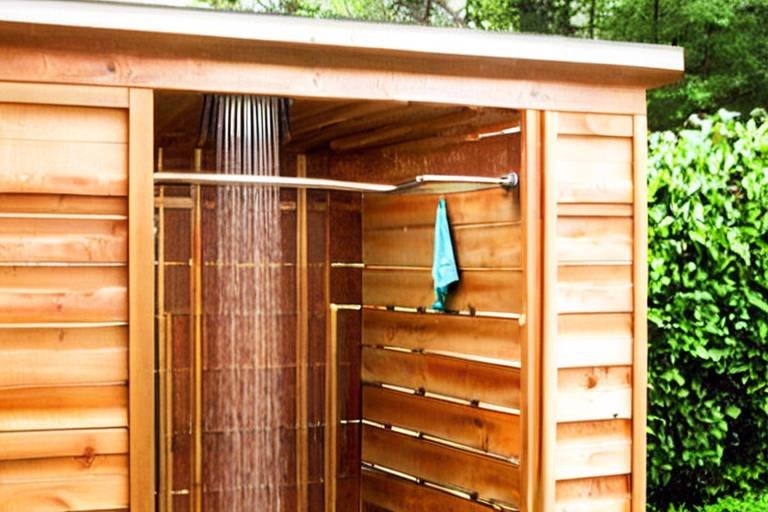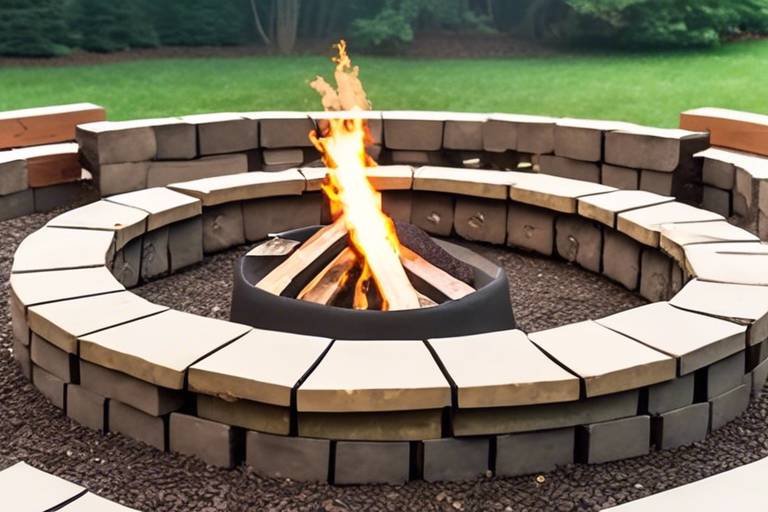How to Start a Compost Pile in Your Backyard
Are you ready to embark on a journey towards a greener, more sustainable lifestyle right in your own backyard? Starting a compost pile is not only beneficial for the environment but also for your garden's health. By recycling organic waste and turning it into nutrient-rich soil, you can reduce waste, save money on fertilizers, and promote a thriving ecosystem right at home.
When it comes to starting a compost pile, the first step is choosing a suitable location. Opt for a spot in your backyard that receives partial sunlight and is easily accessible. Remember, you don't want to place the compost pile too close to your house to avoid any unwanted odors lingering around.
Next, gather the necessary compost materials. You'll need a mix of brown materials like dried leaves and twigs for carbon, and green materials such as kitchen scraps and grass clippings for nitrogen. Balancing these elements is crucial for a successful compost pile.
Layering the materials is key to ensuring proper aeration and decomposition. Alternate between brown and green layers, and don't forget to add water occasionally to maintain the moisture levels. Think of it as creating a delicious lasagna for your garden!
As your compost pile starts to take shape, remember to turn and mix it regularly. Grab a pitchfork and aerate the pile to speed up the decomposition process. Mixing the materials helps distribute moisture and oxygen, creating the ideal environment for beneficial microorganisms to thrive.
Monitoring your compost pile is essential for its success. Keep an eye on the temperature, moisture levels, and any unusual odors. Adjust the ingredients or turning frequency as needed to maintain a healthy and active pile.
After a few months of patience and dedication, your compost should transform into dark, crumbly goodness with an earthy smell. This nutrient-rich soil amendment can be used to enrich your garden, boost plant growth, and reduce the need for chemical fertilizers.
Encountering common issues with your compost pile is normal, but knowing how to troubleshoot them is key. Whether it's a smelly pile, slow decomposition, or unwanted pests, adjusting the ingredients, turning frequency, or moisture levels can help address these challenges effectively.
Once you've mastered the basics of composting, why not explore advanced techniques to further enhance your skills? Consider delving into vermicomposting with worms or trying hot composting for quicker decomposition and richer soil amendments. The possibilities are endless!

Choose a Suitable Location
Choosing a suitable location for your compost pile is crucial to its success. You'll want to find a spot in your backyard that strikes a balance between sunlight exposure and accessibility. Opt for an area that receives partial sunlight to help with the decomposition process, but not too much direct sunlight that can dry out the pile. Additionally, ensure the location is easily reachable for adding materials and turning the pile. It's also important to avoid placing the compost pile too close to your house or outdoor living spaces to prevent any potential odors from becoming bothersome.
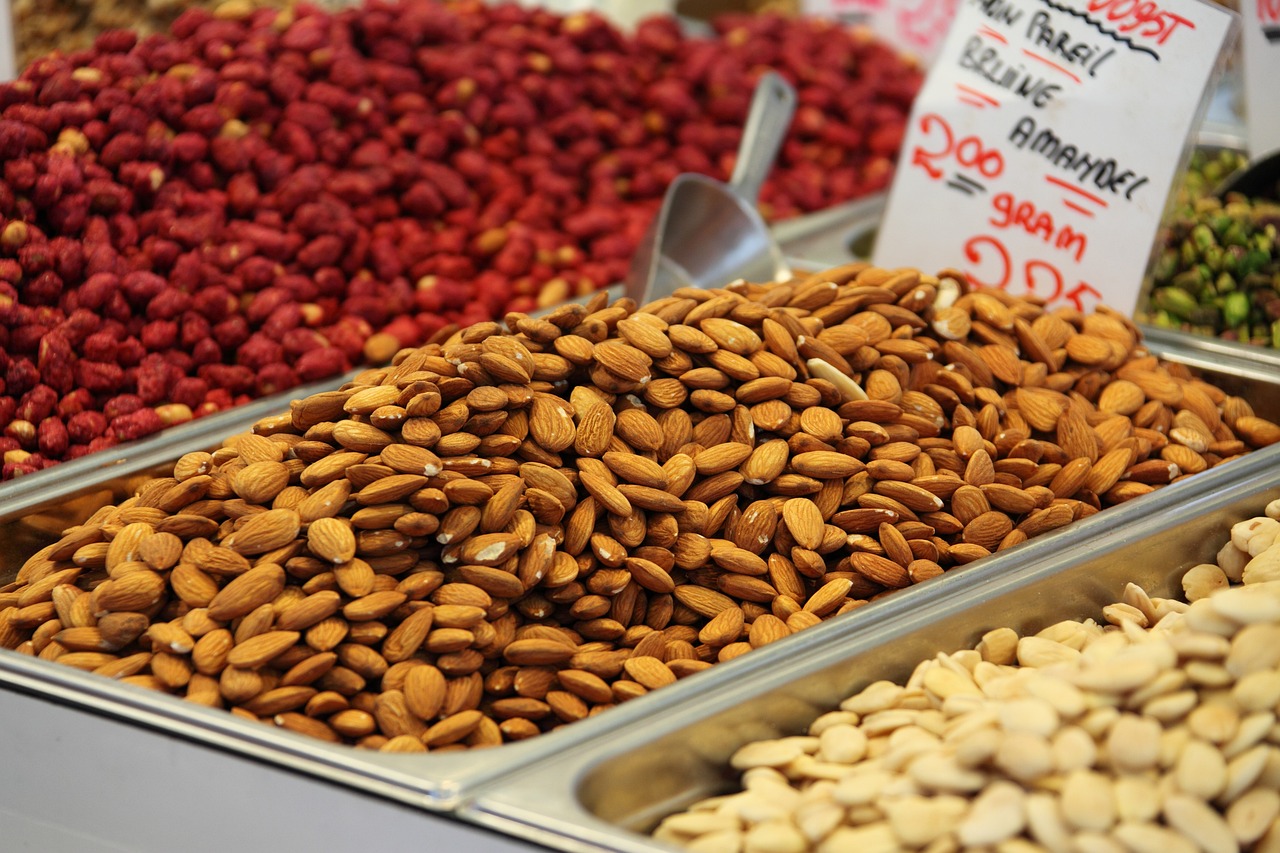
Gather Compost Materials
When it comes to gathering materials for your compost pile, it's essential to strike a balance between brown and green components. Brown materials, such as dried leaves, straw, and shredded newspaper, provide carbon and help create air pockets in the pile. On the other hand, green materials, including fruit and vegetable scraps, coffee grounds, and grass clippings, supply nitrogen for microbial activity.
Imagine your compost pile as a bustling ecosystem where microorganisms work tirelessly to break down organic matter. By providing a variety of ingredients, you ensure that these tiny workers have everything they need to thrive and transform your waste into nutrient-rich soil conditioner.
Creating a diverse mix of materials not only accelerates the decomposition process but also prevents the pile from becoming too wet or too dry. Just like a chef carefully selects ingredients for a delicious dish, you must curate a selection of compost materials to achieve the perfect recipe for success.
Consider the carbon-to-nitrogen ratio, also known as the C:N ratio, when gathering compost materials. A balanced ratio of roughly 30 parts carbon to 1 part nitrogen fosters microbial activity and results in a well-structured compost pile. Think of it as finding the right blend of ingredients for a healthy smoothie – too much of one component can throw off the entire mix.
Remember, the key to a successful compost pile lies in the diversity and quality of the materials you gather. Aim for a harmonious blend of browns and greens, like a symphony of nature's elements coming together to create a masterpiece in your backyard.
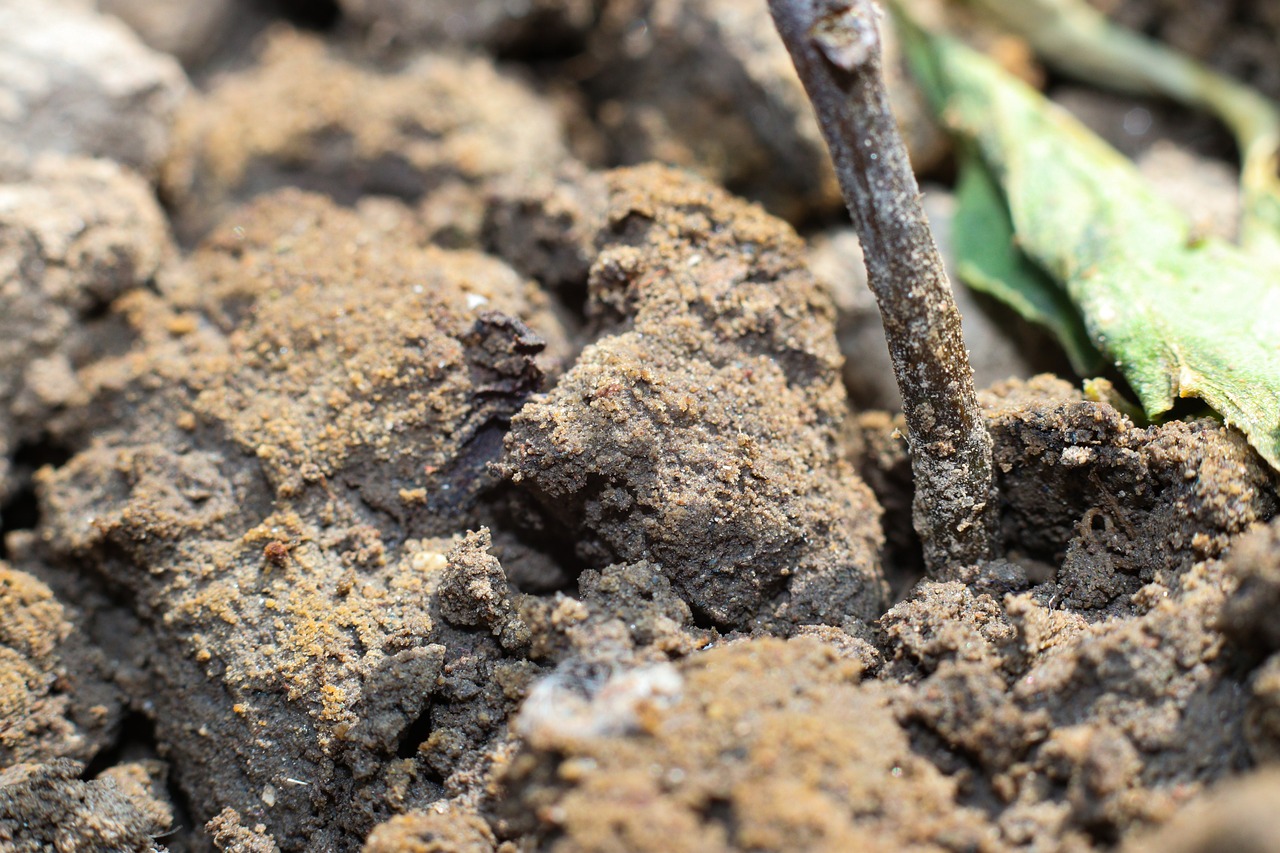
Layer the Materials
When it comes to creating a successful compost pile in your backyard, layering the materials is a crucial step that ensures proper decomposition and nutrient balance. The key is to alternate between brown and green materials to create a harmonious environment for the microorganisms responsible for breaking down the organic matter.
Imagine your compost pile as a delicious lasagna, with each layer playing a vital role in the overall composition. Start with a layer of brown materials, such as dried leaves or straw, to provide carbon-rich content that acts as the foundation for the pile. This layer helps create air pockets within the compost, promoting airflow and preventing the pile from becoming too compact.
On top of the brown layer, add a generous helping of green materials like kitchen scraps, grass clippings, or fresh plant trimmings. These nitrogen-rich ingredients introduce essential nutrients and moisture to the compost, accelerating the decomposition process. Remember, a good compost pile is like a balanced meal for your garden soil!
Continue layering brown and green materials, ensuring that each layer is adequately moist but not soggy. Too much water can lead to a smelly, anaerobic pile, while too little can slow down decomposition. Think of it as finding the perfect balance, like a chef crafting a masterpiece dish with just the right amount of seasoning.
As you build your compost pile layer by layer, consider adding a sprinkle of garden soil or finished compost between the layers. These additions introduce beneficial microorganisms that help kickstart the decomposition process and enrich the final compost product. It's like adding a secret ingredient to your recipe that takes it to the next level!
Remember to finish off your compost lasagna with a top layer of brown material to help regulate moisture levels and cover the pile. This final layer acts as a protective blanket, keeping the internal temperature stable and preventing odors from escaping. With proper layering, your compost pile will transform into a thriving ecosystem of organic matter ready to nourish your garden.
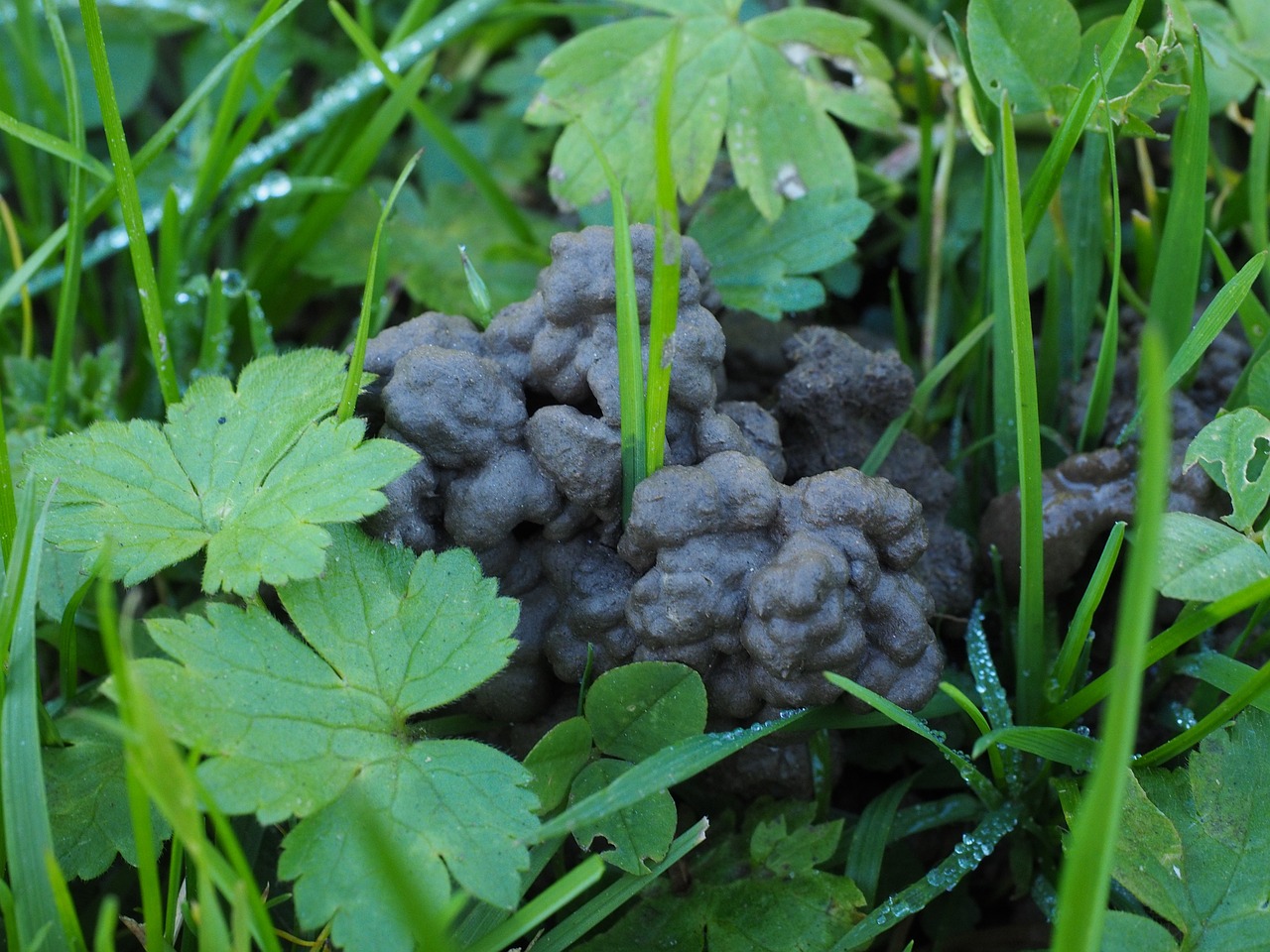
Turn and Mix the Pile
When it comes to maintaining a successful compost pile in your backyard, one crucial step is to turn and mix the pile regularly. This process is essential for aerating the compost and accelerating the decomposition of materials. By turning the pile with a pitchfork, you ensure that oxygen is distributed evenly, promoting the growth of beneficial microorganisms that break down the organic matter.
Imagine your compost pile as a living organism that needs to breathe and move to thrive. Turning and mixing the pile mimics the natural process of decomposition that occurs in the forest floor. Just like how leaves and debris are broken down by various organisms in the wild, your compost pile needs to be stirred to allow for proper breakdown and nutrient release.
Additionally, mixing the materials in your compost pile helps distribute moisture more evenly. This is crucial for maintaining the right level of moisture, as excessive dryness or wetness can hinder the composting process. By regularly turning and mixing the pile, you create a homogenous environment where beneficial bacteria and fungi can work efficiently to break down the organic matter.
Think of turning and mixing your compost pile as giving it a good stir, like mixing ingredients in a recipe. Just as you would blend different flavors and textures to create a delicious dish, blending the brown and green materials in your compost pile creates a nutrient-rich mixture that will benefit your garden soil.
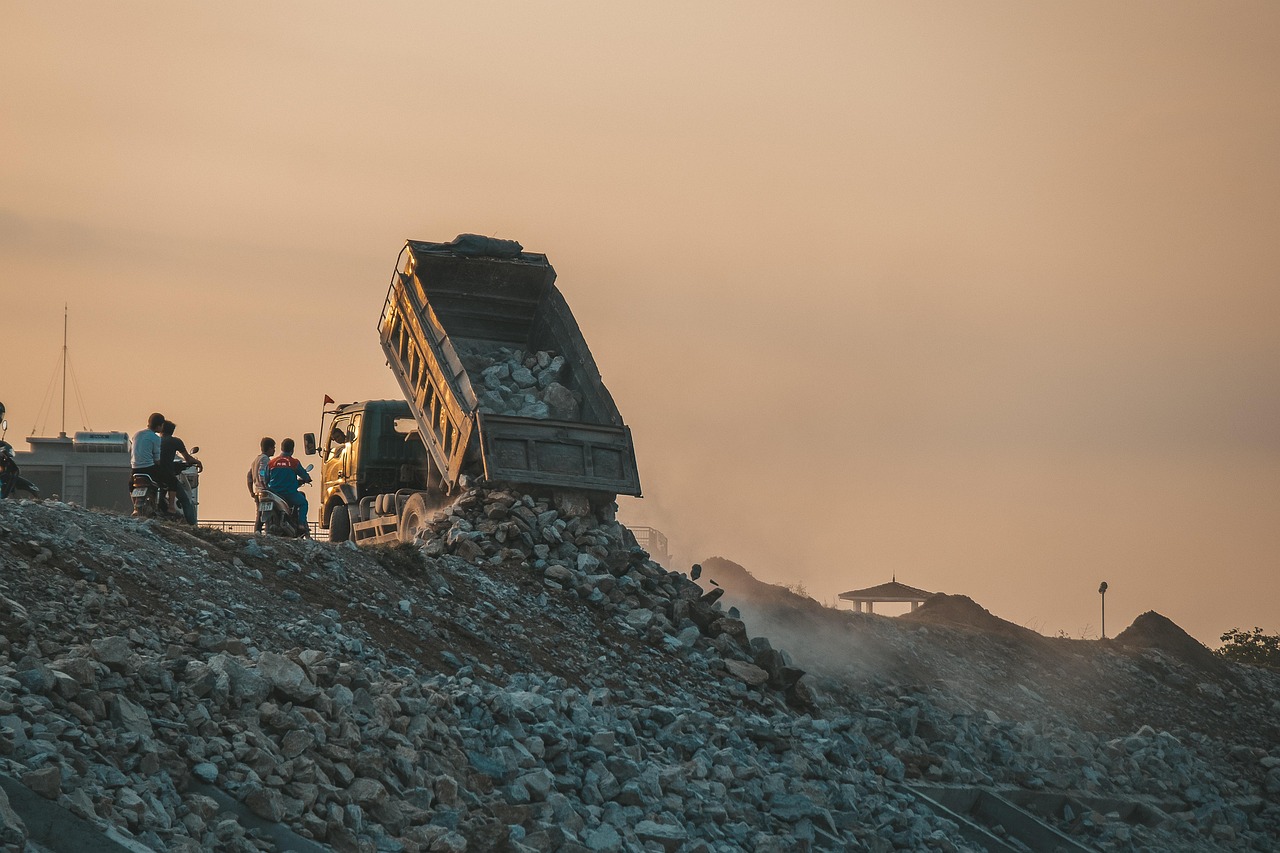
Monitor the Compost Pile
When it comes to maintaining a healthy compost pile in your backyard, monitoring is key to ensuring its success. By keeping a close eye on certain factors, you can optimize the conditions for decomposition and produce high-quality compost for your garden.
One crucial aspect to monitor is the temperature of the compost pile. A well-functioning pile will generate heat as organic materials break down. Use a compost thermometer to check that the temperature is within the optimal range of 110-160°F (43-71°C). Extreme temperatures can indicate issues with the pile's composition or moisture levels.
Another factor to consider is the moisture content of the compost. The pile should be damp, like a wrung-out sponge, to support microbial activity. If the compost appears too dry, sprinkle water over the layers during turning. Conversely, if it's too wet and smells foul, add more dry brown materials to improve aeration.
Odor is a good indicator of the compost pile's health. While some earthy smells are normal, foul or ammonia-like odors may signal imbalances in the decomposition process. Adjust the ingredients by adding more browns or greens as needed to correct any unpleasant smells.
Regularly turning the compost pile not only aerates it but also helps distribute moisture and oxygen. Monitor the decomposition progress by observing how quickly the materials break down and transform into dark, crumbly compost. Adjust the turning frequency based on the pile's activity and temperature.
By actively monitoring the temperature, moisture, and odor of your compost pile, you can fine-tune the conditions to promote efficient decomposition and nutrient-rich compost production. Remember, a well-maintained compost pile is not only beneficial for your garden but also contributes to reducing organic waste and supporting a sustainable environment.
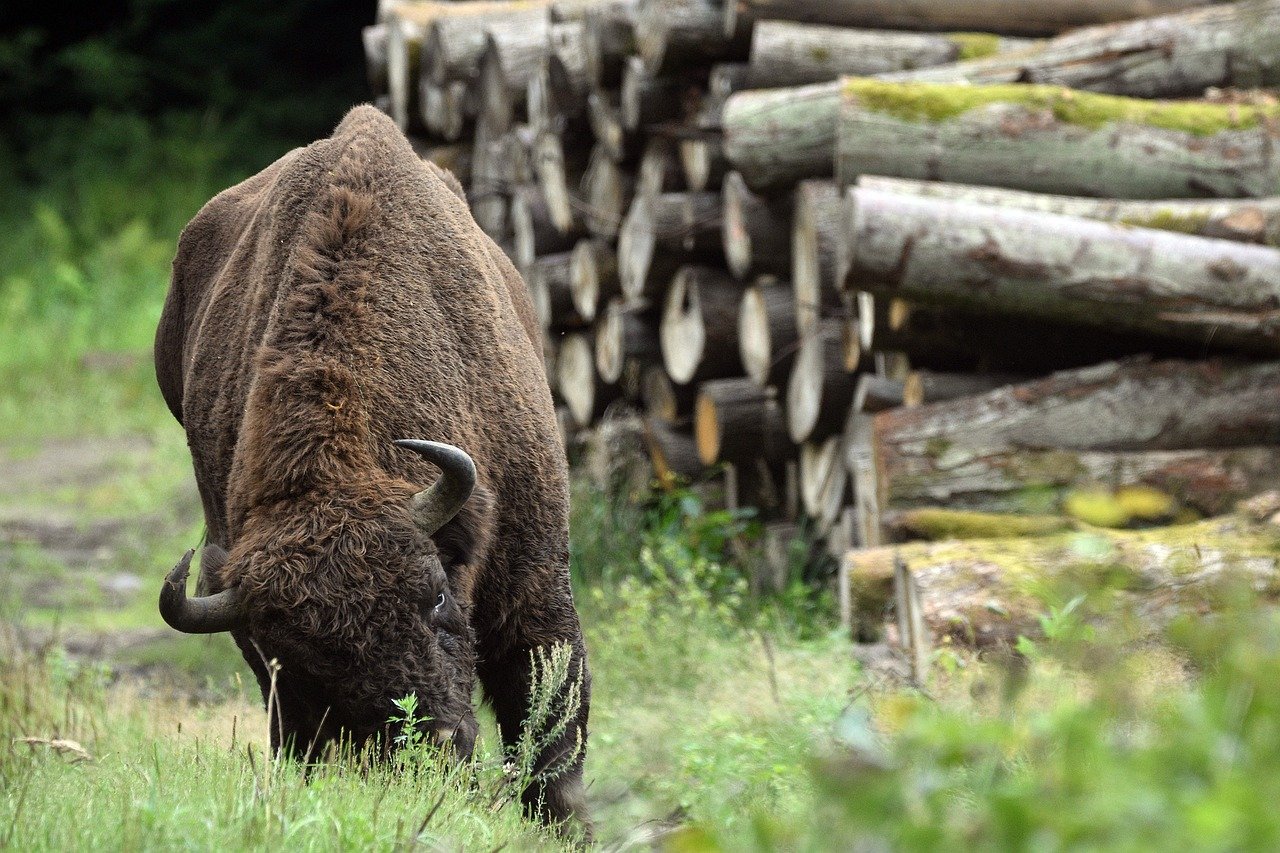
Harvest the Compost
Learn the basics of creating a compost pile in your backyard to reduce waste and enrich your soil. This eco-friendly practice can benefit your garden and the environment.
Once your compost pile has been diligently tended to and has gone through the decomposition process, it's time to harvest the valuable compost that you've worked so hard to create. The finished compost should have a dark, crumbly texture and a pleasant earthy smell, indicating that it is ready to be used in your garden.
When harvesting the compost, you can use a garden fork or shovel to scoop out the mature compost from the bottom of the pile. Be sure to sift through the compost to remove any large, undecomposed materials that can be returned to the pile for further breakdown.
Spread the harvested compost over your garden beds as a nutrient-rich soil amendment. This organic matter will help improve soil structure, retain moisture, and provide essential nutrients for your plants. By using your homemade compost, you can reduce the need for chemical fertilizers and promote healthy plant growth in a sustainable way.
Remember to replenish your compost pile with new materials after harvesting to continue the composting process and maintain a constant supply of nutrient-rich compost for your garden. With each harvest, you'll be closing the loop on waste and creating a self-sustaining cycle of organic matter that benefits both your garden and the environment.
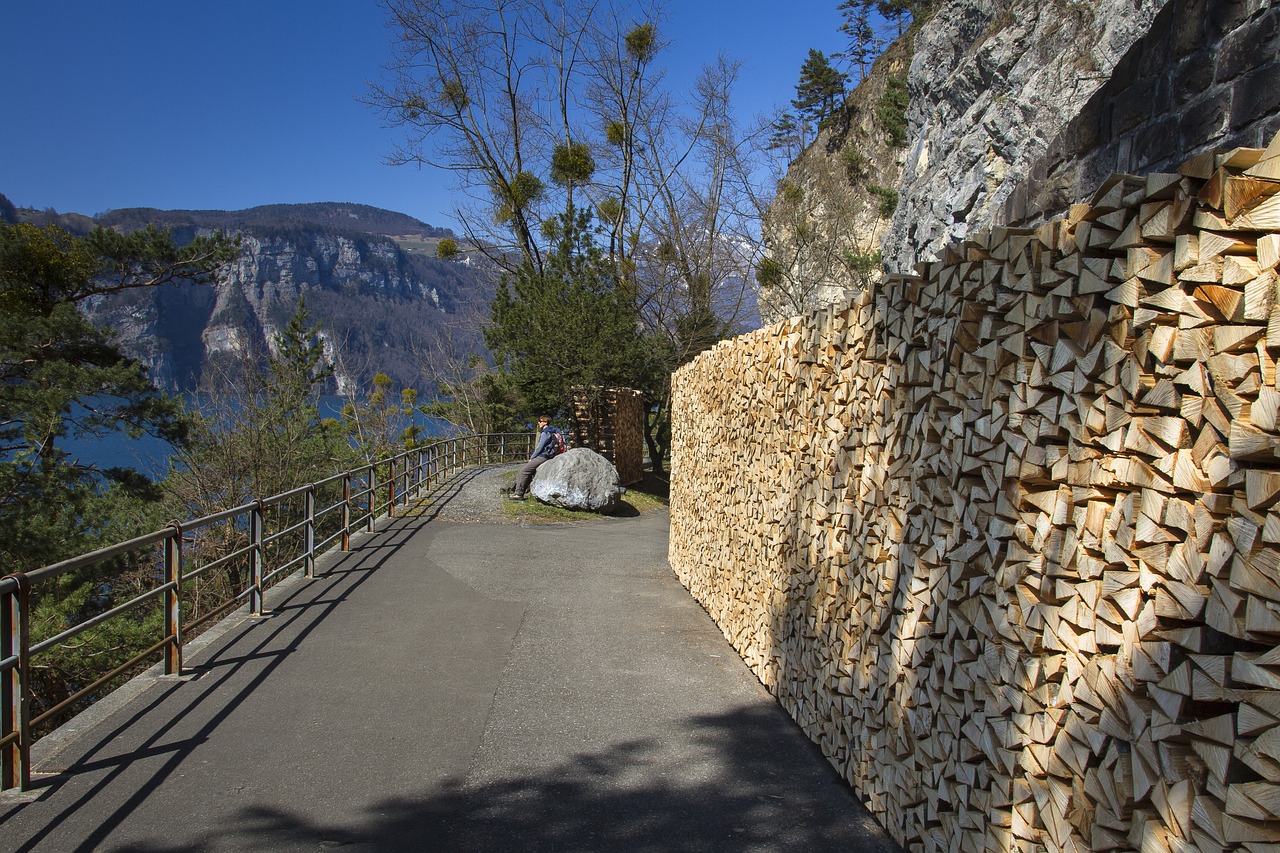
Troubleshooting Common Issues
When it comes to composting, encountering common issues is not uncommon. Troubleshooting these problems can help you maintain a healthy and efficient compost pile. One common issue that composters face is a smelly pile. This odor can result from an imbalance of materials or lack of aeration. To address this problem, try adding more brown materials like dry leaves or cardboard to absorb excess moisture and neutralize odors. Additionally, ensure that you are turning the pile regularly to promote airflow and prevent anaerobic conditions.
Another issue that may arise is slow decomposition. If your compost pile is not breaking down as quickly as expected, it could be due to insufficient moisture or a lack of nitrogen-rich green materials. To speed up the decomposition process, consider adding more kitchen scraps, grass clippings, or manure to provide the necessary nitrogen content. Turning the pile more frequently can also help mix the materials and encourage decomposition.
Pests can also be a nuisance when it comes to composting. Creatures like rodents, flies, or ants may be attracted to your pile, especially if food scraps are not buried properly. To deter pests, make sure to bury kitchen waste under a layer of brown materials and avoid adding meat or dairy products that can attract unwanted visitors. If pests persist, consider covering your compost pile with a secure lid or using a rodent-proof compost bin.
Lastly, maintaining the right moisture levels in your compost pile is crucial for successful decomposition. If your pile is too dry, decomposition will slow down, while excessive moisture can lead to a smelly, anaerobic environment. To achieve the perfect balance, regularly check the moisture content by squeezing a handful of compost. It should feel like a damp sponge – moist but not dripping wet. Adjust the moisture levels by adding water or dry materials as needed to keep the pile in optimal condition.
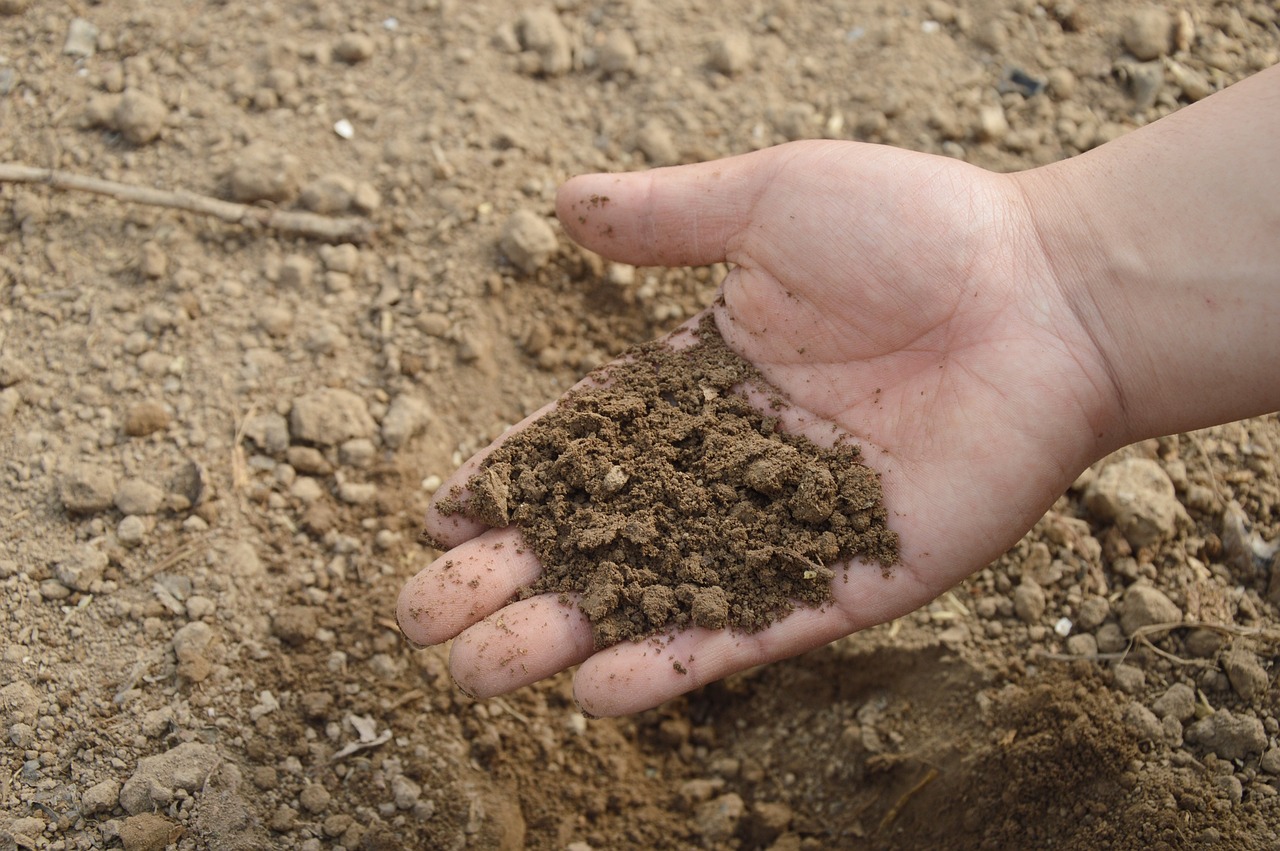
Explore Advanced Composting Techniques
So, you've mastered the basics of composting in your backyard and are ready to take your skills to the next level. Exploring advanced composting techniques can further enhance the quality of your compost and provide even more benefits for your garden. Two popular advanced methods to consider are vermicomposting and hot composting.
Vermicomposting, also known as worm composting, involves using special composting worms to break down organic materials. These worms, such as red wigglers, thrive in a controlled environment and efficiently turn kitchen scraps and other organic waste into nutrient-rich compost. Vermicomposting is a great way to speed up the composting process and produce high-quality compost for your garden.
On the other hand, hot composting is a more traditional method that relies on creating optimal conditions for microbial activity to break down organic matter quickly. By carefully balancing the carbon (brown) and nitrogen (green) materials, maintaining proper moisture levels, and turning the pile regularly, hot composting can generate heat that accelerates decomposition. This method results in fast, high-quality compost that is rich in nutrients and beneficial microorganisms.
Both vermicomposting and hot composting offer unique advantages and can be tailored to suit your composting goals and preferences. Experimenting with these advanced techniques can deepen your understanding of composting processes and help you produce top-notch compost for your garden.
Frequently Asked Questions
- What can I compost in my backyard pile?
You can compost a variety of organic materials such as fruit and vegetable scraps, coffee grounds, eggshells, yard waste, and shredded paper. Avoid adding meat, dairy, oils, and pet waste to your compost pile.
- How often should I turn my compost pile?
It is recommended to turn your compost pile every 1-2 weeks to aerate the materials and promote decomposition. However, you may need to adjust the frequency based on the size of your pile and the composting conditions.
- Why does my compost pile smell bad?
A smelly compost pile is often a sign of too much moisture or improper aeration. To reduce odors, mix in more brown materials, increase aeration by turning the pile more frequently, and ensure proper moisture levels by adding water as needed.
- Can I compost in a small backyard?
Yes, you can compost in a small backyard by using a compact compost bin or pile. Focus on balancing the materials, managing moisture levels, and turning the pile regularly to ensure efficient decomposition in a limited space.
- How long does it take for compost to be ready?
The time it takes for compost to be ready varies depending on factors like the materials used, turning frequency, and environmental conditions. In general, compost can be ready in 2-6 months, but it may take longer for certain materials to fully decompose.


